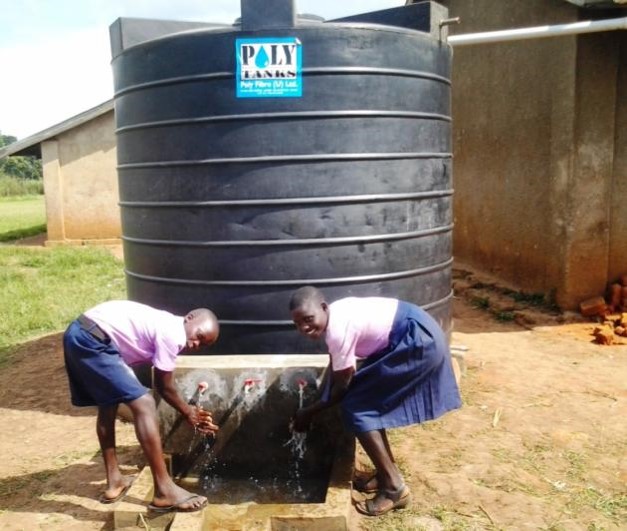
The 2018 World Water Day theme, Nature for Water, speaks of the importance of working on nature-based solutions to the water challenges we face in the 21st century.
The Africa Biodiversity Collaborative Group, through its thematic working group Global Health Linkages to Biodiversity Conservation, is working on the integration of freshwater conservation and Water Sanitation and Hygiene (WASH) by building the capacity of communities to conserve freshwater resources while improving human health and well-being.
We are implementing this integrated approach in South Africa through our members, Conservation International (CI) and Conservation South Africa, CI’s local affiliate office, and in Uganda through the Jane Goodall Institute.
Working in 10 villages in the Albertine rift region of Hoima and Masindi Districts in Uganda, the Jane Goodall Institute (JGI) has been working on building local community capacity to conserve freshwater resources and improving sanitation and hygiene. This region contains an important network of tropical rainforest, which faces threats due to high human population growth, such as deforestation, human-wildlife conflict due to shared water points, as well as sanitation challenges.
Integrated Freshwater Conservation and WASH achievements in Uganda
#1 Renovation of five protected springs: This has greatly improved access to, clean water and water points. Human- wildlife conflict has been reduced due to the improved access.
#2 Construction of five community rain water harvest points: Rainwater harvesting points were identified and constructed in five primary schools in the project area. The provision of the water sources has greatly improved sanitation and hygiene in the beneficiary schools.
#3 Water quality assessments for water facilities: JGI, in partnership with the Directorate of Water Development Laboratory (Government of Uganda), conducted an extensive water quality assessment of all main water points in the target project area so as to provide clean and safe water.
#4 Training of Water Management Committees: Water management user committees were established and trained by staff from the District Water Office and the Sub County Community Development Officer of Budongo.
#5 Training of Community Based Artisans: At each of the water sources, two members of the water management user committees were selected as artisans to repair and maintain the water sources. The artisans were also trained in: basic plumbing including repairs of simple system leaks, maintenance, masonry, and proper use and handling of tools and equipped with a set of tools.
#6 Protect and conserve water sources: Tree seedlings have been planted at the protected water springs. The area above the protected spring has also been planted with Paspalum notatum, a creeping grass to aid in reducing surface run-off and system contamination. The tree cover is intended to provide future shade over the water and reduce evaporation from direct exposure to sun during the dry season.

#8 Water and sanitation sensitization: Trained teachers in creating WASH friendly schools. A WASH-Friendly School is clean, safe, has adequate, well-maintained toilets or latrines for girls and boys and for teachers with water, paper, or other material for anal cleansing; has a place to wash hands with soap/ash and running water after using the latrine; and has enough, safely stored clean drinking water for the school community. The training has equipped teachers with knowledge to integrate lessons on good hygiene practices and water resources conservation into school curriculum, with specific focus on fecal-oral transmission of germs, hand-washing, building hand-washing facilities, latrine use and maintenance, water purification methods and safe drinking water, and water sources protection and conservation.
#9 Awareness materials: Awareness materials with messages on germ transmission, importance of hand washing, sanitation and hygiene practices, and protection of river banks and best practices have been developed and disseminated to community members and schools.
#10 Conduct reviews: Project review in all the villages to assess progress, and to identify success stories, achievements and key challenges were conducted. Notably, was the improved sanitation and hygiene practices among community members.
A healthy ecosystem
These achievements demonstrate the benefits of an integrated systems in improving livelihoods while conserving biodiversity through working hand in hand with the community therefore creating a more sustainable conservation approach.
Photo caption
Photo1: Women from Siiba Village, Masindi Distict, Uganda collecting water from Siiba spring which was rehabilitated through ABCG project. Photo Credit: Brenda Mirembe, JGI. August 2017.
Photo2: Students at Karongo Primary school washing their hands at the newly installed water tank at their school. Photo credit JGI


Add a Comment